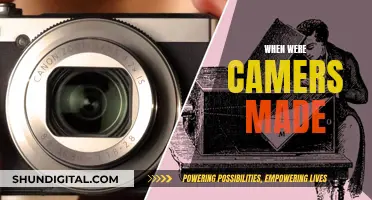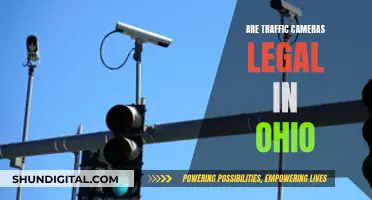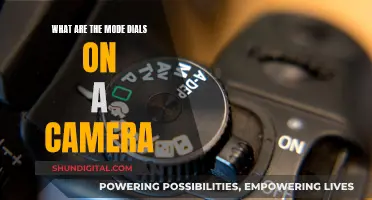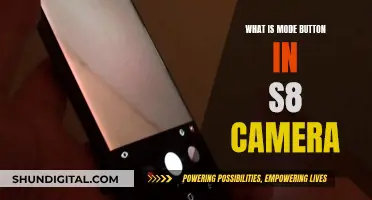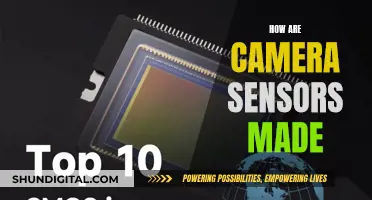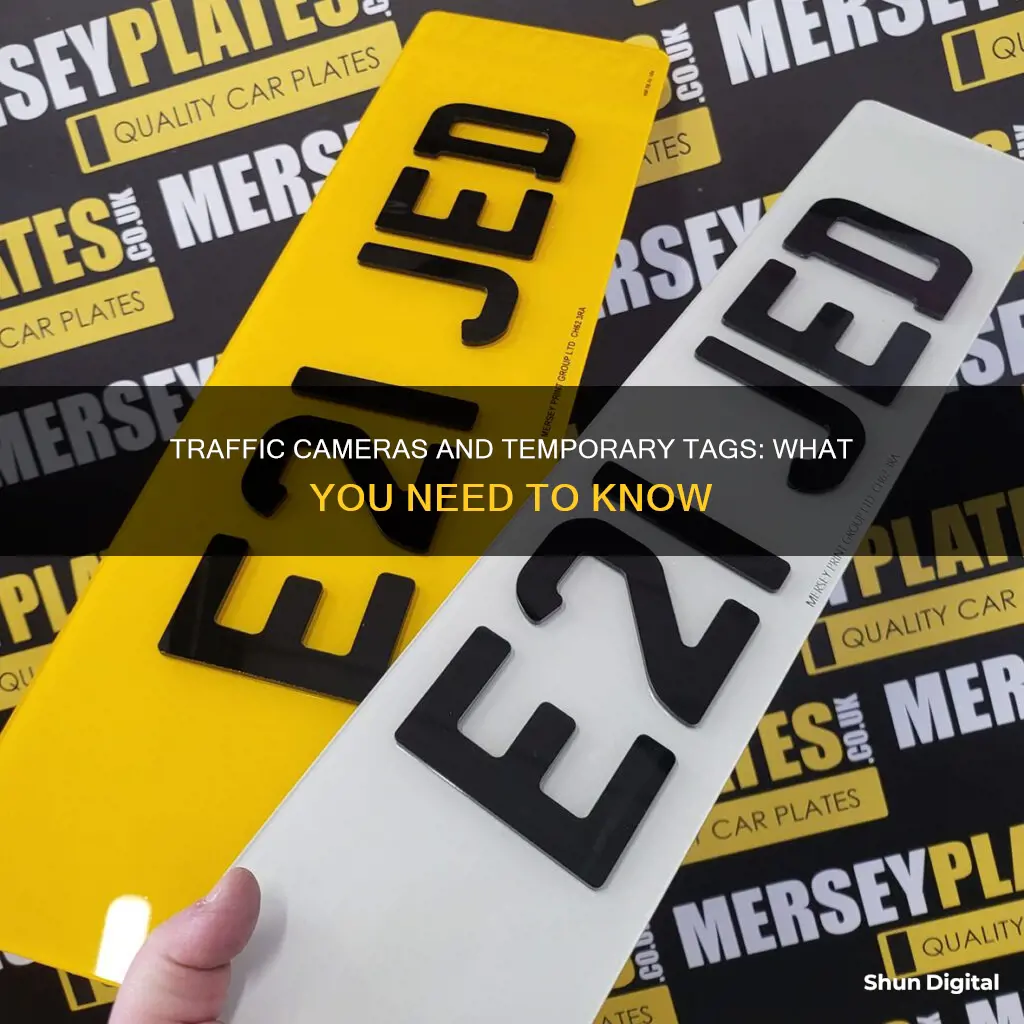
Temporary license plates, or temp tags, are a form of temporary registration for a vehicle. They are often pieces of paper hung on the back window or license plate of a car. While the specific requirements vary by state, common documents needed to obtain a temporary tag include a certificate of title, temporary tag application, proof of car insurance, a valid driver's license, and results of inspections or emissions testing. Temp tags are required to drive a vehicle without license plates, such as a newly purchased car or a car that needs to be inspected.
In recent years, fake temp tags have become an issue, particularly in the DC area. Automated traffic enforcement (ATE) cameras in DC have led to over $100 million in fines from drivers, and fake temp tags are one way that drivers avoid these fines. DC's ATE cameras are more prevalent in Black neighborhoods, which are historically more dangerous due to freeway placement and a lack of transit options. The use of fake temp tags was further normalized during the pandemic when DMV backlogs led to forbearance for offenses like having invalid tags. While the city of DC has convened a task force to address the issue, no concrete actions have been taken.
| Characteristics | Values |
|---|---|
| Purpose | Temporary registration for a vehicle |
| Required for | Driving a vehicle without license plates |
| Reasons for needing one | Bought a new or used vehicle; driving an unregistered vehicle to an inspection; moving from out of state; importing a vehicle |
| Cost | Varies by state and vehicle |
| Paperwork required | Certificate of Title; temporary tag application; proof of car insurance; valid driver's license; results of inspections or emissions testing, if applicable; loan documentation or release, if applicable |
| Issuing authority | Dealerships in some states; local DMV or another establishment in other states |
| Validity | Until the date specified on the tag |
| Penalty for driving with expired temp tag | Pricey ticket; car may be impounded |
| Fake temp tags | A problem in some areas, e.g. DC |
| Traffic cameras | Used for traffic monitoring and enforcement |
What You'll Learn
- Temporary license plates are required for driving unregistered vehicles
- Fake temporary license plates are a problem for traffic enforcement
- Red light cameras are placed at busy intersections to detect red light violations
- Speed cameras are used to detect speeding violations on less populated roads
- Traffic sensor cameras are used to measure traffic flow and determine traffic light timing

Temporary license plates are required for driving unregistered vehicles
Temporary license plates, also known as temp tags, are a form of temporary registration for a vehicle. They are required when driving unregistered vehicles. Each state has different requirements for issuing a temporary tag, but common items include a certificate of title, temporary tag application, proof of car insurance, a valid driver's license, and results of inspections.
The cost of a temporary tag varies by state and vehicle, with some states using a flat rate and others considering the weight, value, or year of the car. Temporary tags typically last until the date specified on the tag, and driving with an expired tag is illegal.
In some states, dealerships are permitted or required to provide temporary plates and initiate the registration process. However, it is important to finalize the process as per local requirements, as some dealerships may provide fake temporary plates.
When purchasing a vehicle from a private seller, individuals must handle the registration themselves, including obtaining a temporary transit permit from the DMV website.
While temporary tags are necessary for driving unregistered vehicles, they do not replace the need for valid insurance. Most states require insurance for registered vehicles, even those with temporary tags.
Understanding Computer Cameras: What Are They?
You may want to see also

Fake temporary license plates are a problem for traffic enforcement
Fake temporary license plates are a growing problem for traffic enforcement in the US. These counterfeit credentials are often linked to shootings, hit-and-run accidents, and other serious crimes. The issue is particularly prevalent in cities like New York, where a black market for temporary license plates has emerged. These fake plates are easily accessible online and through word-of-mouth, with some licensed used car dealers even exploiting loose regulations in states like New Jersey and Georgia to issue real temp tags illegally.
The consequences of this illicit trade have been dire, with numerous fatal accidents involving vehicles with temporary license plates. In New York City alone, twenty-five people were killed in crashes involving cars with temporary license plates in 2021 and 2022, with at least ten of those plates being fraudulent. The problem is further exacerbated by the challenges faced by local police in catching drivers with fake plates, due to the variety of temp tags, the difficulty in determining their authenticity, and the minor criminal charges that typically follow.
The issue of fake temporary license plates is not limited to New York, with similar problems reported in Washington, D.C., Texas, Massachusetts, and other states. These plates are often used to evade tolls, avoid parking tickets, and conceal the identities of drivers committing crimes. The proliferation of automated enforcement, such as cameras that generate bills for motorists who run red lights or pass toll gantries, has also contributed to the rise in the use of fake temporary license plates.
To combat this problem, some cities like New York have conducted well-publicized towing operations of cars with fake plates. Additionally, the NYPD is training its officers to spot fake temporary tags, teaching them to identify certain markings that indicate a fraudulent plate. However, the root of the problem lies in the weak regulations in certain states that allow licensed dealers to profit from selling temporary tags illegally. Until these regulations are strengthened and consistently enforced, the issue of fake temporary license plates will likely persist, posing a challenge for traffic enforcement and endangering the public.
Point-and-Shoot Cameras: Do They All Have Macro Mode?
You may want to see also

Red light cameras are placed at busy intersections to detect red light violations
Red light safety cameras are typically placed at busy intersections, where there is a higher volume of traffic and a greater potential for accidents. These cameras are triggered by sensors installed in the road, which detect when a vehicle passes the stop line and enters the intersection illegally. The cameras then capture photographs or videos of the vehicle, providing evidence of the violation.
The use of red light cameras varies across different localities, with each municipality having different operating budgets and traffic safety programs. They tend to be more common in urban areas with higher traffic density and a greater need for road safety measures. In some states, the cameras are prohibited from capturing the face of the driver, while in others, a view of the driver may be included in the footage.
While red light cameras are an effective tool for enforcing traffic laws, they also raise concerns about privacy and the potential for abuse. Some people may view them as an invasion of privacy, while others may worry about the potential for misuse of the captured data. However, it's important to note that driving is a regulated activity, and by obtaining a driver's license, individuals agree to abide by certain rules, including obeying traffic signals.
In addition to red light cameras, there are other types of traffic cameras and monitoring systems in place. For example, traffic sensor cameras are used to monitor traffic flow and help determine the timing of traffic lights, while speed cameras monitor and enforce speed limits, especially in less populated areas. Automated Number Plate Recognition (ANPR) cameras are also used to track the locations of certain vehicles and drivers by reading and analyzing license plate numbers.
Setting Up Spy Cameras: Computer Connection Guide
You may want to see also

Speed cameras are used to detect speeding violations on less populated roads
Speed cameras are an effective tool for monitoring and enforcing speed limits on roads, particularly those in less populated areas. They serve as a supplementary measure to traditional enforcement methods, such as police patrols, and can help alter the social norms around speeding. Speed cameras are especially useful in areas with a history of speeding or other traffic violations, such as school zones or residential neighbourhoods with frequent complaints.
Speed safety cameras (SSCs) come in three main types: fixed units, point-to-point (P2P) units, and mobile units. Fixed units are stationary cameras mounted on poles or structures, targeting a single location. P2P units consist of multiple cameras that capture the average speed of vehicles over a certain distance. Mobile units are portable cameras, often mounted on vehicles, and can be moved to different locations as needed.
The strategic placement of speed cameras at intersections, on-ramps, and other congested areas helps law enforcement monitor traffic flow and detect accidents or disruptions. These cameras are equipped with sensors that can accurately measure vehicle speed, enabling authorities to issue tickets to speeding drivers. The presence of speed cameras can act as a deterrent, encouraging drivers to follow speed limits and potentially reducing the number of accidents, especially in residential areas.
The use of speed cameras has been supported by various studies and reports. For example, the UK Department for Transport estimated a 22% reduction in personal injury collisions and a 42% decrease in fatalities or serious injuries at camera sites. Additionally, a study by the Insurance Institute for Highway Safety (IIHS) found that intersections without red light cameras had a 30% higher rate of fatal red-light-running crashes.
While some may raise concerns about privacy and mass surveillance, speed cameras have been proven to enhance road safety, especially in less populated areas where speeding violations are more prevalent.
Surveillance Cameras: Watching Our Every Move
You may want to see also

Traffic sensor cameras are used to measure traffic flow and determine traffic light timing
Temporary license plates, or temp tags, are a form of temporary registration for a vehicle. They are usually paper hangings placed on the back window or license plate of a car. These are required for driving a vehicle without a license plate, such as a new or used vehicle, a car that needs to be inspected, or a vehicle brought in from out of state.
Traffic sensor cameras are a type of traffic monitoring camera that is used to measure traffic flow and determine traffic light timing. They are typically small, cylindrical, or dome-shaped cameras enclosed in weatherproof housing and mounted on top of traffic signals or light poles above roadways. These cameras are not tied to any enforcement system and are used to monitor traffic flow and conditions rather than for issuing tickets. The video footage is generally not archived but is used by traffic engineers or law enforcement to take appropriate action if necessary.
While some traffic cameras are used for enforcement and issuing tickets, such as red light cameras and speed cameras, traffic sensor cameras serve a different purpose. They provide valuable data and information on traffic conditions, helping to improve the efficiency and safety of roads. By monitoring traffic flow and patterns, these cameras can assist in traffic management and congestion alleviation.
In addition to traffic sensor cameras, there are other types of cameras used for traffic monitoring and control. Red light cameras are placed at busy intersections to detect and capture images of vehicles that enter the intersection on a red light. These cameras are typically bulkier and are mounted near intersections, with multiple cameras at different angles to capture violations. Speed cameras, on the other hand, are used to detect speeding violations and can be fixed or mobile. Fixed speed cameras are mounted on poles or structures, while mobile speed cameras are portable and can be moved to different locations.
Dismissing Bus Lane Camera Tickets in NYC: What You Need to Know
You may want to see also
Frequently asked questions
A temporary license plate, or temp tag, serves as a form of temporary registration for a vehicle. It proves that you own a vehicle for which you have applied for a full registration that has yet to arrive.
It depends on the type of traffic camera. Automatic enforcement cameras issue tickets and violations and will likely be able to detect temporary license plates. Non-enforcement cameras, on the other hand, are used to monitor traffic speeds and conditions and are not tied to any type of automated ticket-issuing system.
Yes, it is possible to receive a ticket from an automatic enforcement camera if you have a temporary license plate. However, it is important to note that the laws and enforcement methods may vary depending on your location.
There are two main types of traffic cameras: automatic enforcement cameras and non-enforcement cameras. Automatic enforcement cameras include red light cameras and speed cameras, which detect and issue tickets for traffic violations. Non-enforcement cameras include traffic sensor cameras and automated number plate recognition (ANPR) cameras, which are used for monitoring traffic conditions and tracking vehicle whereabouts, respectively.
If you receive a ticket in the mail, it is important to take it seriously. Ignoring a ticket can result in additional fines, collection agencies contacting you, or damage to your credit score. It is recommended to review the details of the violation and consider taking appropriate action, such as paying the fine or consulting with an expert for further guidance.


